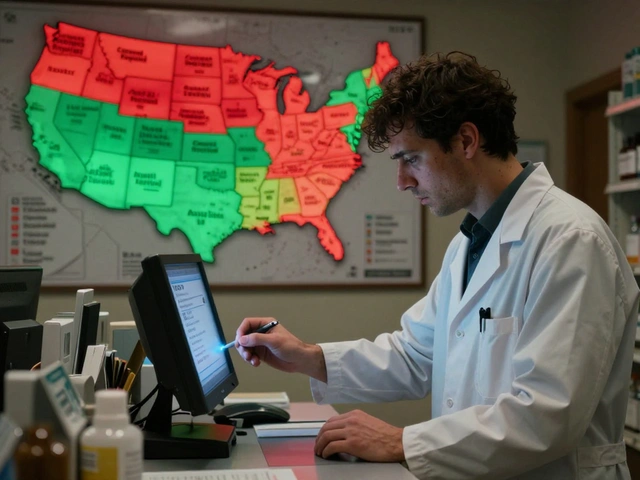Antibiotic Interactions: Simple Ways to Stay Safe
If you’ve ever taken an antibiotic, you know it can feel like a quick fix for an infection. But antibiotics don’t work alone – they can clash with other meds, foods, or supplements you’re already using. Those clashes are called antibiotic interactions, and they can make the drug less effective or cause nasty side effects.
Understanding these interactions helps you finish your course without surprise headaches, stomach upset, or worse. Below we break down the most common culprits and give you straight‑forward actions you can take right now.
Common Food and Drug Interactions
Dairy & calcium‑rich foods: Tetracycline antibiotics (like doxycycline) bind to calcium, so milk, cheese, or even fortified orange juice can stop the drug from being absorbed. If you’re on a tetracycline, take it with water on an empty stomach and wait at least two hours before dairy.
Antacids & supplements: Antacids that contain magnesium or aluminum, as well as calcium or iron supplements, can interfere with fluoroquinolones (Cipro, Levaquin). The same two‑hour rule applies – separate them to keep the antibiotic working.
Statins & macrolides: Some antibiotics like clarithromycin and erythromycin slow down liver enzymes that break down statin drugs. This can raise statin levels and increase muscle pain risk. If you need both, your doctor may lower the statin dose or pick a different antibiotic.
Alcohol: While not every antibiotic reacts badly with alcohol, mixing them can worsen side effects like nausea, dizziness, and liver strain. It’s safest to avoid booze until you finish the prescription.
Practical Tips to Prevent Bad Interactions
1. Ask your pharmacist: Before you start any new med or supplement, a quick check with the pharmacy can catch hidden clashes.
2. Read the label: Look for warnings about food or other drugs right on the prescription bottle – they’re there for a reason.
3. Keep a medication list: Write down every prescription, over‑the‑counter drug, and supplement you take. Share this list with any new doctor.
4. Timing matters: If you must take something that could interact, space it out. A two‑hour gap works for most calcium, antacid, or iron interactions; a four‑hour gap is safer for some macrolide‑statin combos.
5. Watch for side effects: New muscle pain, unusual bruising, severe stomach upset, or sudden dizziness could signal an interaction. Contact your healthcare provider right away.
Most of the time, a simple adjustment—like moving a supplement to bedtime—prevents problems entirely. The key is staying aware and asking questions early.
Our tag page gathers all articles that dig deeper into specific antibiotic combos. Whether you’re curious about how ciprofloxacin mixes with antacids or want a quick guide on avoiding dairy with doxycycline, you’ll find practical advice in each post.
Bottom line: antibiotics save lives, but only when they work correctly. By watching what you eat, checking other meds, and timing doses right, you keep the medicine strong and protect your body from avoidable issues. Stay informed, stay safe, and finish that prescription with confidence.

Rifampin: Understanding Interactions and Risks to Stay Safe
Rifampin is a commonly prescribed antibiotic, but it comes with a range of potential drug interactions and side effects. Understanding these interactions is crucial for safe use, whether taken for tuberculosis or other infections. Being mindful of what medications and supplements you combine with Rifampin can help prevent unwanted complications. Here’s a guide to help you stay informed.
read more




